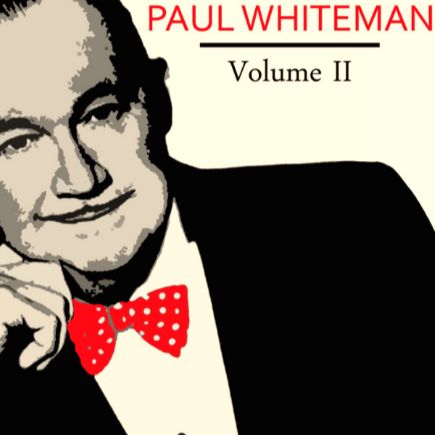Ain’t Misbehavin’: Fats Waller, Harlem et l’affirmation d’un art
Composée en 1929 par Fats Waller et Harry Brooks, sur des paroles d’Andy Razaf, Ain’t Misbehavin’ est bien plus qu’un simple succès musical: elle incarne l’esprit foisonnant de la Harlem Renaissance. Pensée comme numéro d’ouverture de la revue Connie’s Hot Chocolates, produite au Connie’s Inn — principal rival du Cotton Club —, elle célèbre l’inventivité afro-américaine dans un contexte de profonde effervescence artistique.
La chanson séduit par la combinaison d’une mélodie accrocheuse et d’harmonies sophistiquées, typiques du style stride dont Waller était l’un des maîtres incontestés. À travers un texte sur la fidélité amoureuse face aux tentations, Ain’t Misbehavin’ trouve une résonance universelle et intemporelle, renforçant son pouvoir d’attraction bien au-delà de son époque.
Son destin bascule lorsqu’un jeune Louis Armstrong est invité à doubler l’orchestre de Leroy Smith pour jouer au Hudson Theater. Son interprétation entre les actes, d’abord discrète depuis la fosse, devient rapidement le point culminant du spectacle. Un critique du New York Times souligne la puissance de ce moment, décrivant la chanson comme ‘synthétique, mais tout à fait agréable’. Armstrong est alors officiellement intégré à la distribution: sa prestation, désormais sur scène, propulse sa carrière vers une reconnaissance nationale.
Ici, la version de « Ain’t Misbehavin’ » par le compositeur et directeur d’orchestre américain Paul Whiteman, enregistrée à New York le 9 juillet 1935, avec le tromboniste et vocaliste Jack Teagarden, publiée dans l’album « Paul Whiteman Vol II ».
Publié en 1969 dans le cadre de la série RCA Vintage, cet album est le deuxième d’une série de deux disques consacrés à la musique de l’orchestre populaire de Paul Whiteman. Bien qu’il ait été supplanté par des collections ultérieures, il s’agit d’un ensemble digne d’intérêt (et axé sur le jazz).
On y trouve cinq morceaux de 1928 mettant en vedette le cornettiste Bix Beiderbecke (et parfois Bing Crosby et les Rhythm Boys), le « Wang Wang Blues » de 1920, un trio de sélections pré-Bix de 1927, deux voix de Mildred Bailey de 1932, une rare version de « It’s Only a Paper Moon » de 1933 qui comporte un court solo du trompettiste Bunny Berigan et deux sélections de 1935 avec le tromboniste-chanteur Jack Teagarden.
Ain’t Misbehavin’: Fats Waller, Harlem y la afirmación de un arte
Compuesta en 1929 por Fats Waller y Harry Brooks, con letra de Andy Razaf, Ain’t Misbehavin’ es mucho más que un éxito musical: encarna el espíritu vibrante del Renacimiento de Harlem. Concebida como número de apertura de la revista Connie’s Hot Chocolates, producida en el Connie’s Inn — principal competidor del Cotton Club —, celebra la inventiva afroamericana en un momento de intensa efervescencia artística.
La canción destaca por su combinación de melodía pegadiza y armonías sofisticadas, características del estilo stride que Waller dominaba con maestría. Su letra, centrada en la fidelidad amorosa frente a las tentaciones, le confiere una resonancia universal y atemporal, lo que ha contribuido a consolidar su atractivo a lo largo de las décadas.
Su destino cambia cuando un joven Louis Armstrong es invitado a reforzar la orquesta de Leroy Smith en el Hudson Theater. Su interpretación durante los intermedios, inicialmente desde el foso, se convierte pronto en el punto culminante del espectáculo. Un crítico del New York Times destacó la fuerza de ese momento, describiendo la canción como “sintética, pero francamente agradable”. Armstrong es entonces integrado oficialmente en el reparto, y su actuación sobre el escenario lanza su carrera hacia el reconocimiento nacional.
Aquí, la versión de « Ain’t Misbehavin’ » por el compositor y director estadounidense Paul Whiteman, grabada en Nueva York el 9 de julio de 1935, con el trombonista y vocalista Jack Teagarden, publicada en el álbum « Paul Whiteman Vol II ».
Publicado en 1969 como parte de la serie RCA Vintage, este es el segundo de dos discos dedicados a la música de la popular orquesta de Paul Whiteman. Aunque superado por colecciones posteriores, es un conjunto digno (y centrado en el jazz).
Hay cinco piezas de 1928 con el cornetista Bix Beiderbecke (y ocasionalmente Bing Crosby y los Rhythm Boys), « Wang Wang Blues » de 1920, un trío de selecciones pre-Bix de 1927, dos voces de Mildred Bailey de 1932, una rara versión de 1933 de « It’s Only a Paper Moon » con un breve solo del trompetista Bunny Berigan y dos selecciones de 1935 con el trombonista y cantante Jack Teagarden.
Ain’t Misbehavin’: Fats Waller, Harlem e l’affermazione di un’arte
Composta nel 1929 da Fats Waller e Harry Brooks, con testo di Andy Razaf, Ain’t Misbehavin’ è molto più di un successo musicale: rappresenta lo spirito vivace della Harlem Renaissance. Pensata come apertura della rivista Connie’s Hot Chocolates, andata in scena al Connie’s Inn — principale concorrente del Cotton Club —, celebra l’ingegno afroamericano in un contesto di grande fermento artistico.
Il brano conquista per l’efficace combinazione tra melodia accattivante e armonie raffinate, tipiche dello stile stride che Waller padroneggiava in modo magistrale. Il testo, incentrato sulla fedeltà amorosa nonostante le tentazioni, le conferisce una forza espressiva universale e senza tempo, che ne ha garantito la longevità.
La svolta arriva quando un giovane Louis Armstrong viene invitato a rinforzare l’orchestra di Leroy Smith al Hudson Theater. La sua esecuzione tra un atto e l’altro, inizialmente dal golfo mistico, diventa presto il momento clou dello spettacolo. Un critico del New York Times sottolineò la potenza di quel passaggio, definendo la canzone “sintetica, ma assolutamente gradevole”. Armstrong viene così inserito ufficialmente nel cast, e la sua performance sul palco segna l’inizio della sua ascesa a livello nazionale.
Qui, la versione di « Ain’t Misbehavin’ » con il compositore e direttore d’orchestra americano Paul Whiteman, registrata a New York il 9 luglio 1935, con il trombonista e cantante Jack Teagarden, pubblicata nell’album « Paul Whiteman Vol II ».
Pubblicato nel 1969 come parte della serie RCA Vintage, questo è il secondo di due dischi dedicati alla musica della popolare orchestra di Paul Whiteman. Sebbene sia stato superato da raccolte successive, si tratta di un disco degno di nota (e incentrato sul jazz).
Ci sono cinque pezzi del 1928 con il cornettista Bix Beiderbecke (e occasionalmente Bing Crosby e i Rhythm Boys), « Wang Wang Blues » del 1920, un trio di selezioni pre-Bix del 1927, due voci di Mildred Bailey del 1932, una rara versione di « It’s Only a Paper Moon » del 1933 con un breve assolo del trombettista Bunny Berigan e due selezioni del 1935 con il trombonista-cantante Jack Teagarden.
Ain’t Misbehavin’: Fats Waller, Harlem, and the assertion of an art form
Composed in 1929 by Fats Waller and Harry Brooks, with lyrics by Andy Razaf, Ain’t Misbehavin’ is far more than a popular hit — it captures the dynamic spirit of the Harlem Renaissance. Originally conceived as the opening number for the revue Connie’s Hot Chocolates, staged at Connie’s Inn — the main rival of the Cotton Club — the piece celebrates African American creativity during a time of profound artistic vitality.
The song captivates through its blend of catchy melody and sophisticated harmonies, hallmarks of the stride piano style that Waller mastered like few others. Its lyrics, centered on romantic fidelity in the face of temptation, carry a timeless and universal resonance, lending the piece lasting relevance.
Its trajectory shifted dramatically when a young Louis Armstrong was asked to reinforce Leroy Smith’s orchestra at the Hudson Theater. His intermission performance — initially delivered from the orchestra pit — quickly became the highlight of the evening. A New York Times critic noted the impact of the moment, calling the song “synthetic but thoroughly enjoyable.” Armstrong was soon officially added to the cast, and his stage performance marked the beginning of his rise to national fame.
Here, the version of « Ain’t Misbehavin » by the American composer and bandleader Paul Whiteman, recorded in New York on July 9, 1935, featuring trombonist and vocalist Jack Teagarden, is included in the album « Paul Whiteman Vol II. »
Released in 1969 as part of the RCA Vintage series, this album is the second in a two-record set dedicated to the music of Paul Whiteman’s popular orchestra. Although it has been overshadowed by later collections, it remains a noteworthy set (with a focus on jazz).
It includes five tracks from 1928 featuring cornetist Bix Beiderbecke (and occasionally Bing Crosby and the Rhythm Boys), the « Wang Wang Blues » from 1920, a trio of pre-Bix selections from 1927, two vocals by Mildred Bailey from 1932, a rare version of « It’s Only a Paper Moon » from 1933 with a short solo by trumpeter Bunny Berigan, and two selections from 1935 featuring trombonist-singer Jack Teagarden.
Autres articles – Otros artículos – Altri articoli
Ain’t Misbehavin’–19.07.1929–Louis ARMSTRONG
Ain’t Misbehavin’–02.08.1929–Fats WALLER
Ain’t Misbehavin’–13.07.1933–Duke ELLINGTON
Ain’t Misbehavin’–03.03.1937–Jimmy MUNDY
Ain’t Misbehavin’–22.04.1937–Django REINHARDT
Ain’t Misbehavin’–xx.05-06.1938–Jelly Roll MORTON
Ain’t Misbehavin’–xx.xx.1944–Art TATUM
Ain’t Misbehavin’–18.05.1950–Sarah VAUGHAN
Ain’t Misbehavin’–xx.10.1955–Johnny HARTMAN


